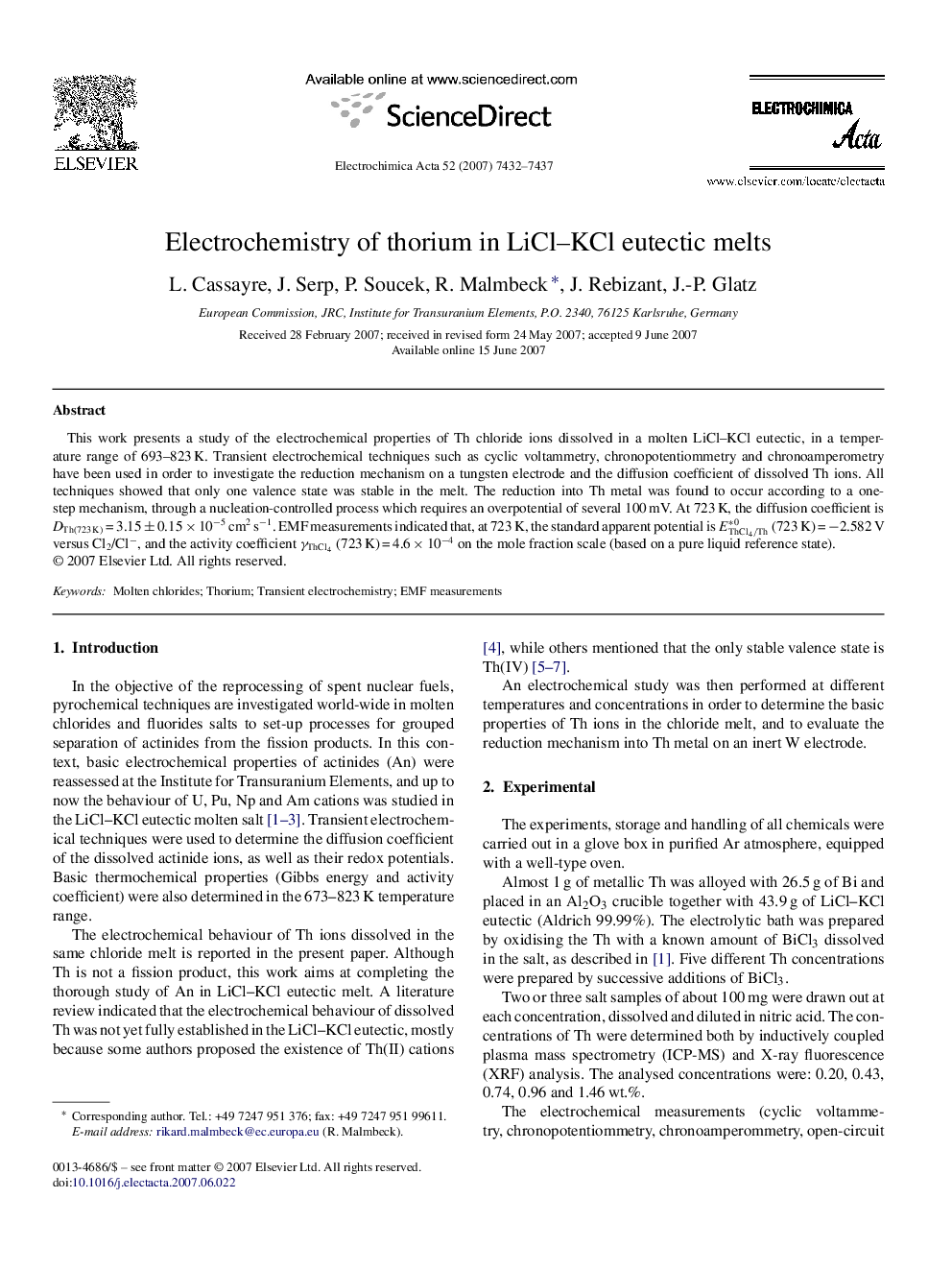| Article ID | Journal | Published Year | Pages | File Type |
|---|---|---|---|---|
| 195826 | Electrochimica Acta | 2007 | 6 Pages |
This work presents a study of the electrochemical properties of Th chloride ions dissolved in a molten LiCl–KCl eutectic, in a temperature range of 693–823 K. Transient electrochemical techniques such as cyclic voltammetry, chronopotentiommetry and chronoamperometry have been used in order to investigate the reduction mechanism on a tungsten electrode and the diffusion coefficient of dissolved Th ions. All techniques showed that only one valence state was stable in the melt. The reduction into Th metal was found to occur according to a one-step mechanism, through a nucleation-controlled process which requires an overpotential of several 100 mV. At 723 K, the diffusion coefficient is DTh(723 K) = 3.15 ± 0.15 × 10−5 cm2 s−1. EMF measurements indicated that, at 723 K, the standard apparent potential is EThCl4/Th*0 (723 K) = −2.582 V versus Cl2/Cl−, and the activity coefficient γThCl4γThCl4 (723 K) = 4.6 × 10−4 on the mole fraction scale (based on a pure liquid reference state).
